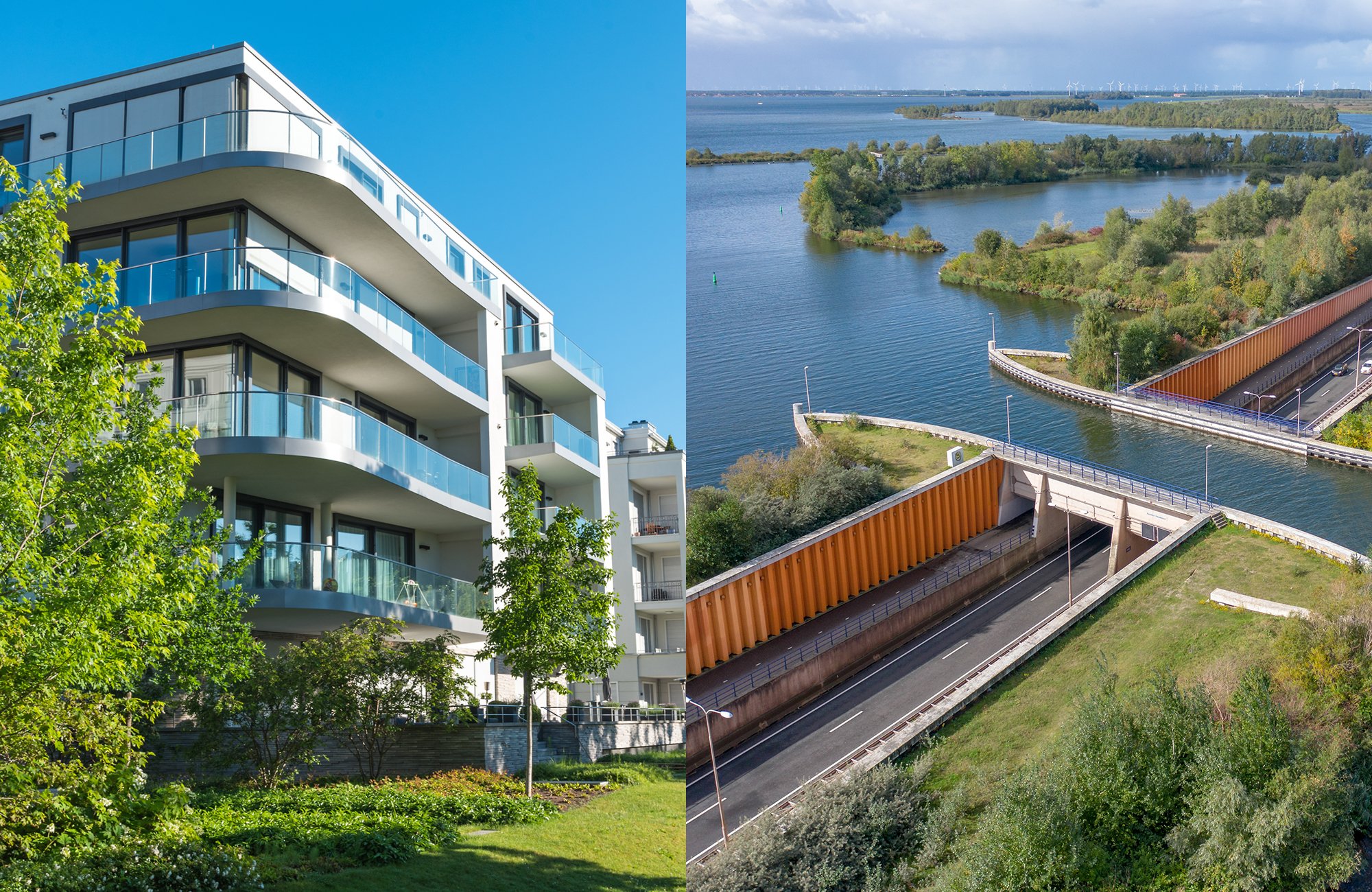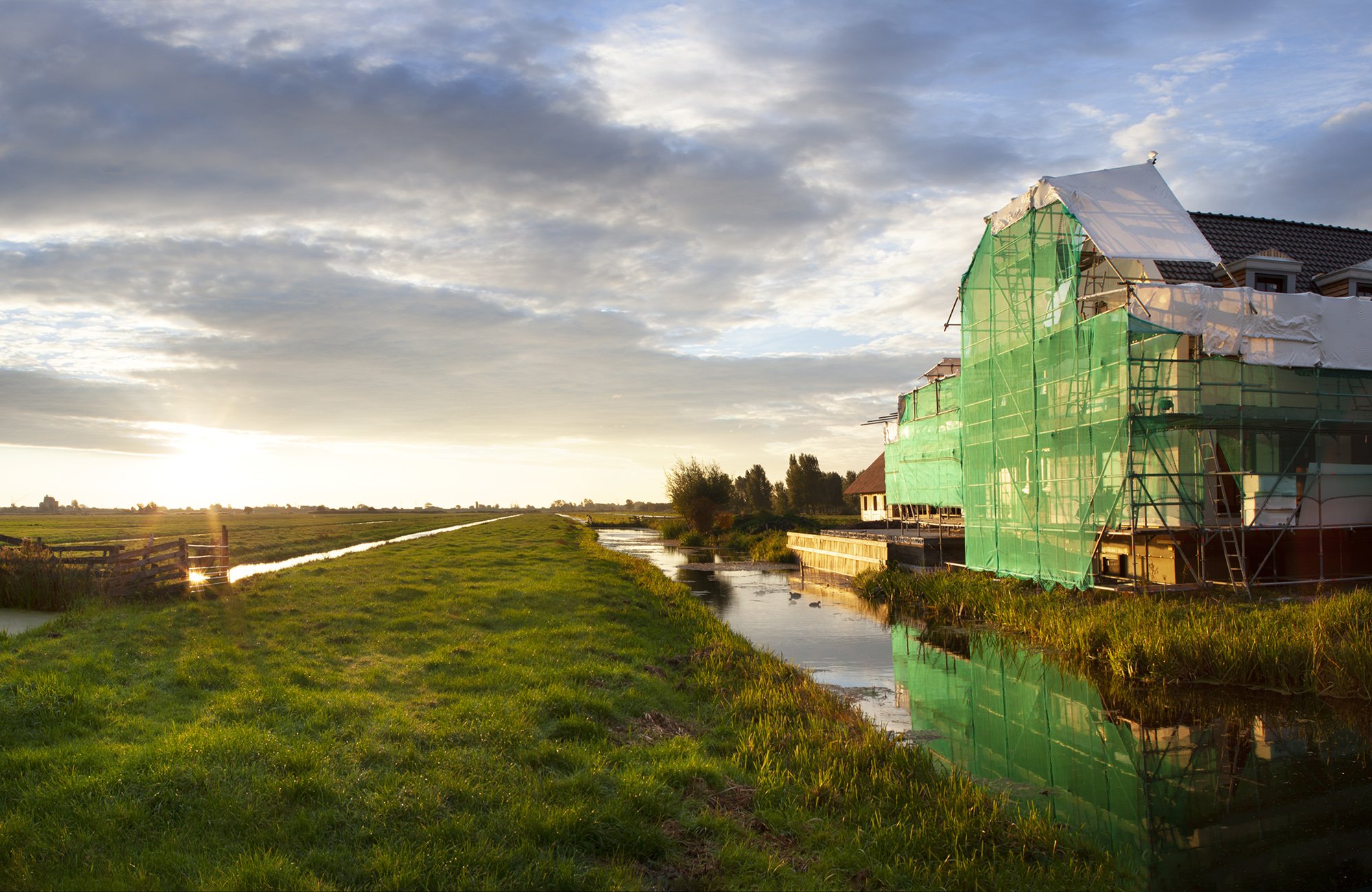Frequently asked questions - Assessment method
Do you have a question that is not on the list? Ask it by using the form at the bottom of the page

Assessment method
The Environmental Performance Assessment Method (in short, Assessment method) is a uniform measuring method for calculating the environmental performance of structures in an unambiguous, verifiable and reproducible manner. It thus creates a level playing field for all parties involved. The environmental performance of various structures can be compared, with the aim of reducing the ultimate environmental impact of a structure. In the Netherlands, EN 15804 is the foundation of the Assessment Method.
Construction companies calculate the environmental performance of a construction with the Environmental Performance Assessment Method. They use it to calculate the environmental impact of material use. The outcome of this calculation is expressed in 1 number (Environmental Performance of Buildings - EPB (Dutch: MPG) for B&U, Environmental Cost Indicator - ECI (Cutch: MKI) for GWW). This allows developers to see which building components cause the most (negative) impact on the environment.
The Stichting Nationale Milieudatabase (formerly Stichting Bouwkwaliteit) manages the Assessment method.
The Assessment Method is used in both public and private law contexts. Public law use means that it is referenced in legislation and regulations, in this case the Bbl, with the applicable version specified in the Environment and Planning Regulation. Visit the Assessment Method page to see which version and corresponding amendments apply.
Private parties using the Assessment Method may determine for themselves which version of the Assessment Method they prescribe.
The Assessment method is performance oriented, not solution oriented and therefore sets no requirements on construction method and technology. Clients and contractors can use the method to make agreements about a construction project’s quality levels, with total design freedom and space for innovative solutions.
The Environmental Performance of Buildings (EPB) is an important benchmark for a building’s sustainability. The lower the EPB, the more sustainable the use of materials. The EPB is an objective resource during the design process and can be used in a Design Brief to record the result of a design process. An EPB calculation uses environmental information from the NMD.
Scores for environmental impact categories need to be weighted and combined to arrive at a single indicator for environmental impact. This weighting takes place using the shadow pricing method: multiplying the characterised impact scores by the corresponding shadow price, which is the highest permissible cost level for the government (prevention cost) per unit of emission control.
The Assessment method only indicates the methodology of how the environmental performance of a building or structure should be calculated. It does not indicate the set of construction products and construction installations over which the calculation should be made. Nor does it indicate how the environmental performance of a building should be divided over several use functions in that building. The regulations that refer to the Assessment Method for calculating the requirements set in the relevant regulation (e.g. Building Decree or BREEAM) indicate the collection of construction products and building installations over which the calculation should take place. This is always a description and not an exhaustive list, as there are always products that do not appear in the list. The overview of the scope is therefore only included for information as appendix to the Assessment Method and does not claim to be a complete overview, because the components that do or do not need to be included differ per regulation.
The Environmental Performance Assessment Method for Construction Works is based on NEN-EN 15804 Sustainability of Structures – Environmental Declarations – Basic Rules for the Construction Products Product Group. The Assessment Method models NEN-EN 15804 to the Dutch context and to Dutch construction methods.
No specific building service life expectation is indicated in the Environmental Performance Assessment Method for Construction Works; clients and contractors can decide to indicate this. However, many default values are mentioned, these being 75 years for dwellings and 50 years for utility buildings. Construction practice needs a standardised Life Cycle Assessment of buildings in the form of a well-founded deviation from the default value in order to benchmark the environmental performance of buildings and consciously steer towards a long(er) or short(er) life cycle, as early as the design stage. Commissioned by the Ministry of the Interior and Kingdom Relations, W/E adviseurs prepared the ‘Specific Building Service Life Guideline’ report, which serves as a guideline for the voluntary use of a similar standardised life cycle assessment. If there is sufficient support, this guideline can be included as normative in the Environmental Performance Assessment Method for Construction Works.
The DUBOkeur® demonstrates which products (for the construction, civil engineering or interior design sector), raw material, installation or home are the most environmentally friendly choice. This is demonstrated using an environmental Life Cycle Assessment produced by the Dutch Institute for Building Biology and Ecology (NIBE). Having a quality mark such as DUBOkeur® is not incorporated in the Building Decree. Requirements are, however, set on the Environmental Performance of Buildings (EPB).
With a project on Non-Dutch EPDs, we are trying to improve communication on this and make the lines of communication shorter so that companies do not incur unnecessary costs on adjustments. It is also expected that, through European developments, some will be harmonised, reducing differences between member states.
The Assessment method only indicates the methodology of how the environmental performance of a building or structure should be calculated. It does not indicate the set of construction products and construction installations over which the calculation should be made. Nor does it indicate how the environmental performance of a building should be divided over several use functions in that building. The regulations that refer to the Assessment method for calculating the requirements set in the relevant regulation (e.g. Building Decree or BREEAM) indicate the collection of construction products and building installations over which the calculation should take place. This is always a description and not an exhaustive list, as there are always products that do not appear in the list. The overview of the scope is therefore only included for information as appendix to the Assessment method and does not claim to be a complete overview, because the components that do or do not need to be included differ per regulation
Subscribe to our Newsletter
Sign up now and receive our newsletter (in Dutch) 10 times a year!
